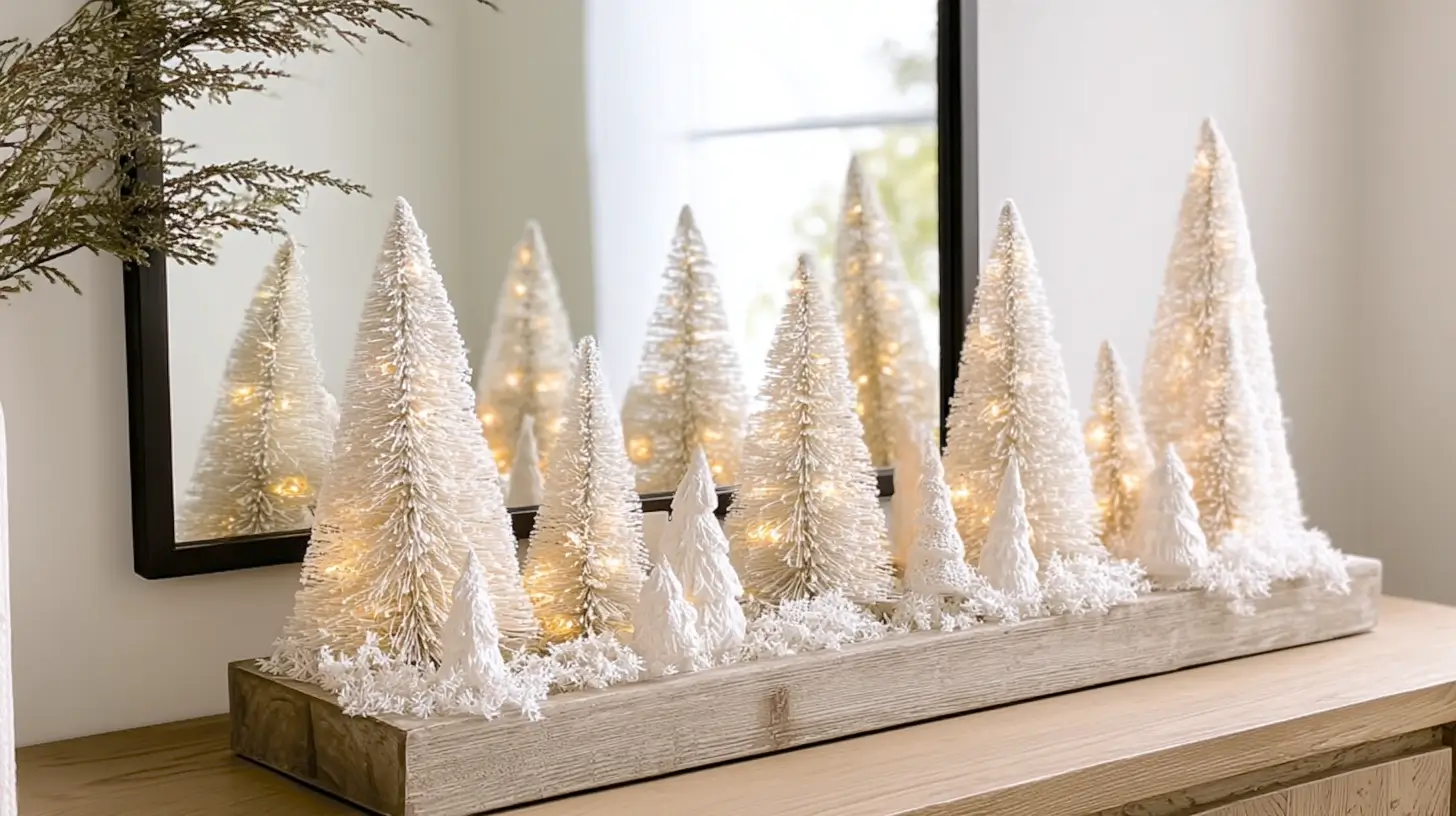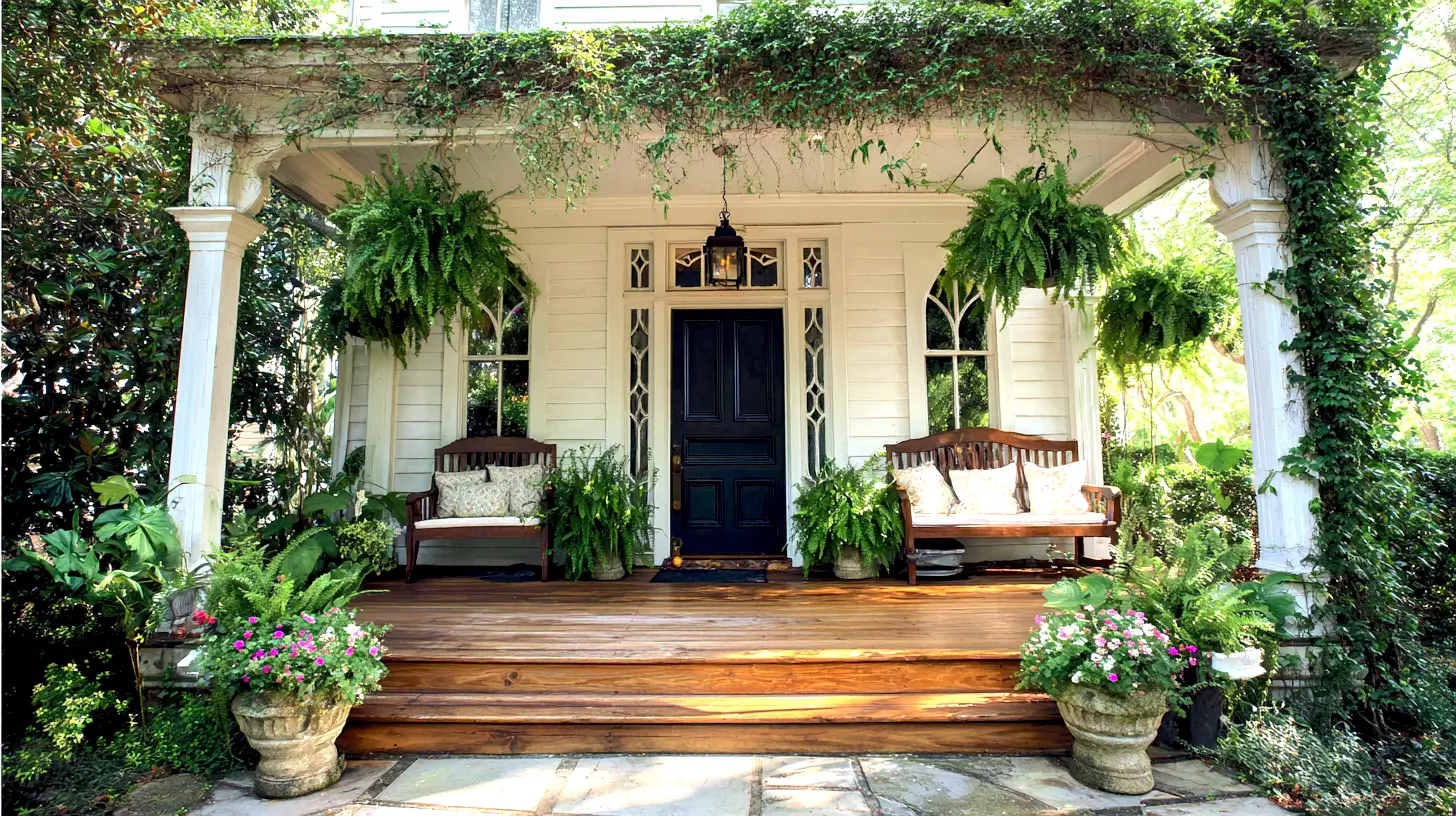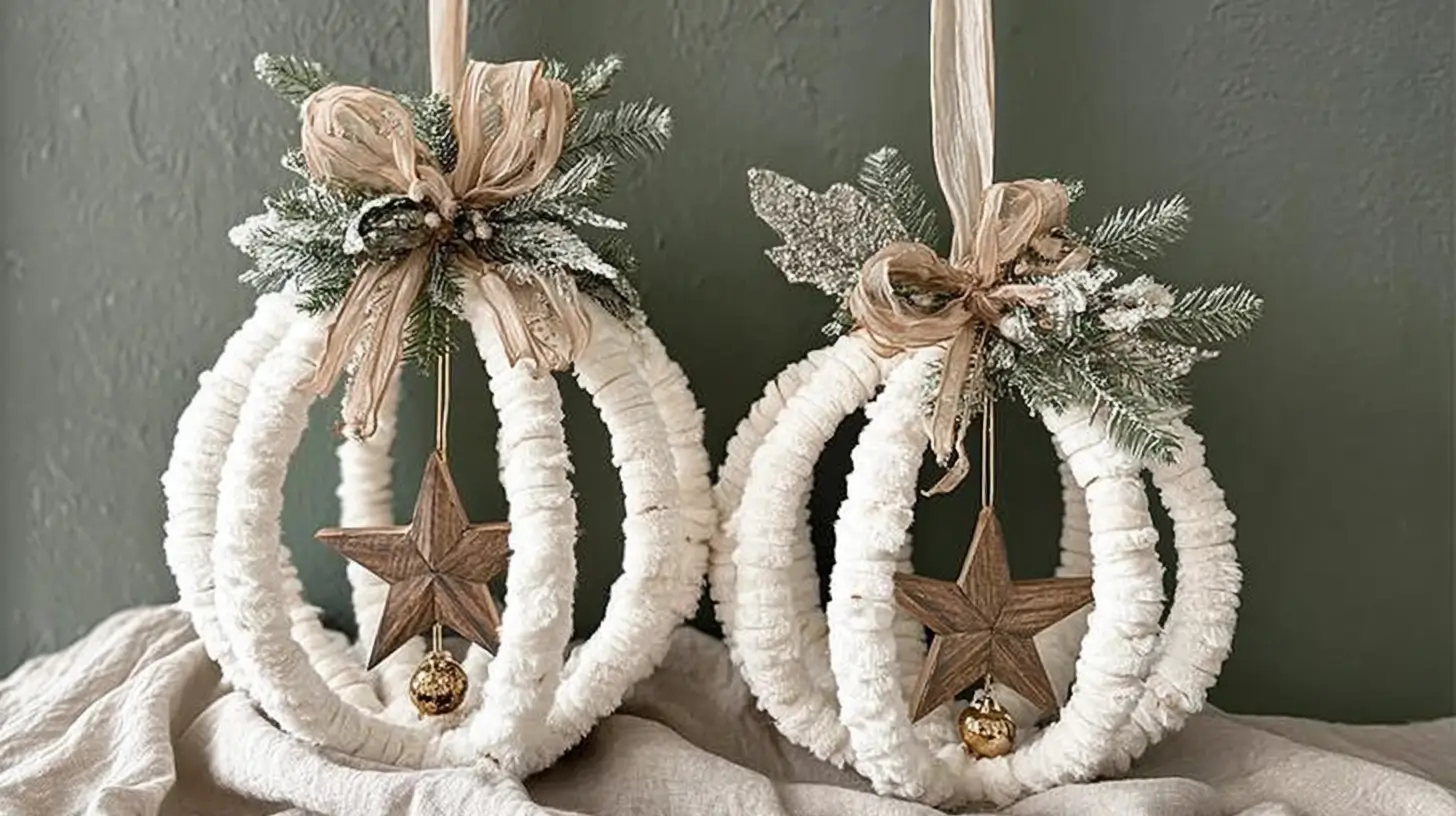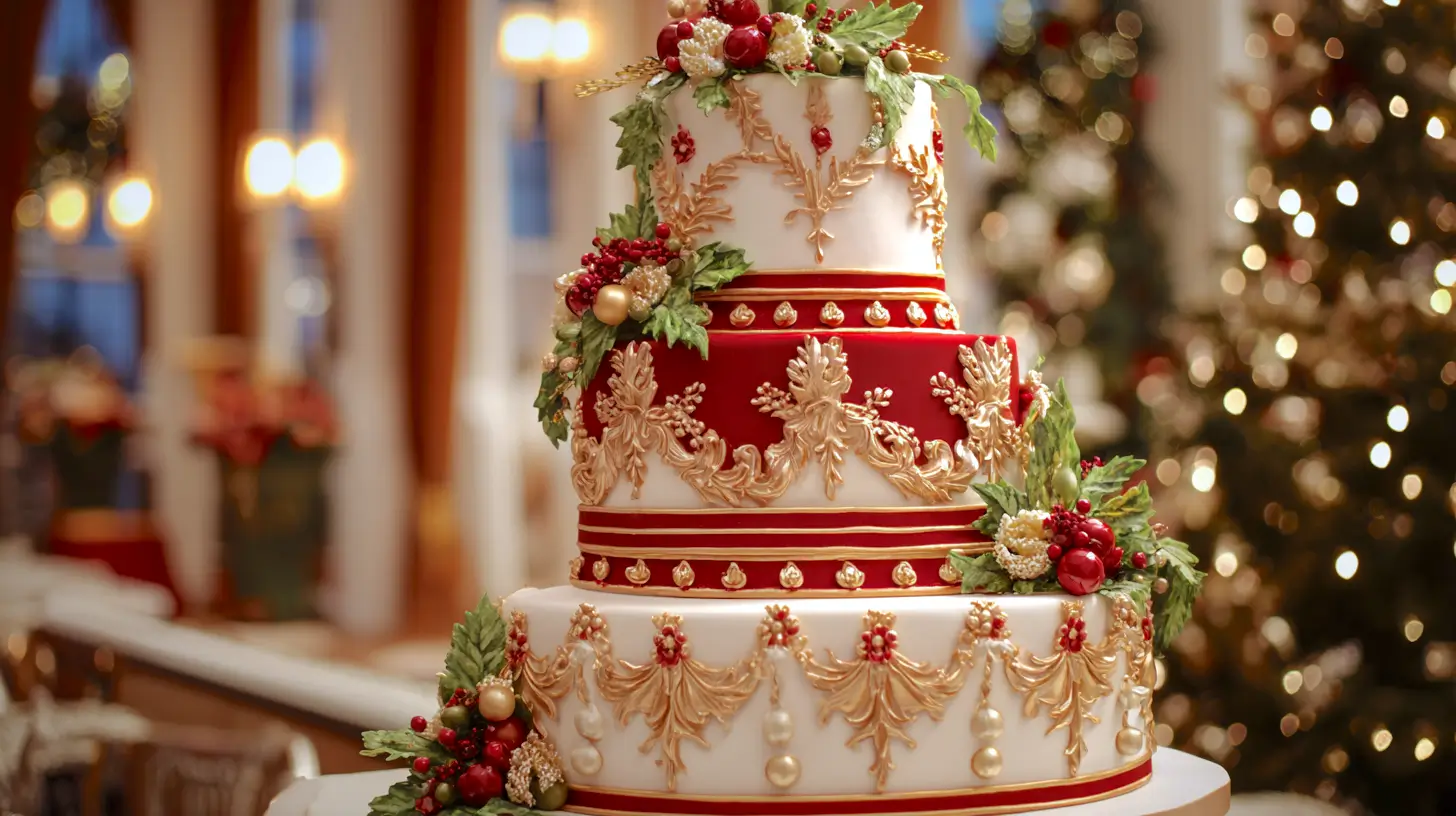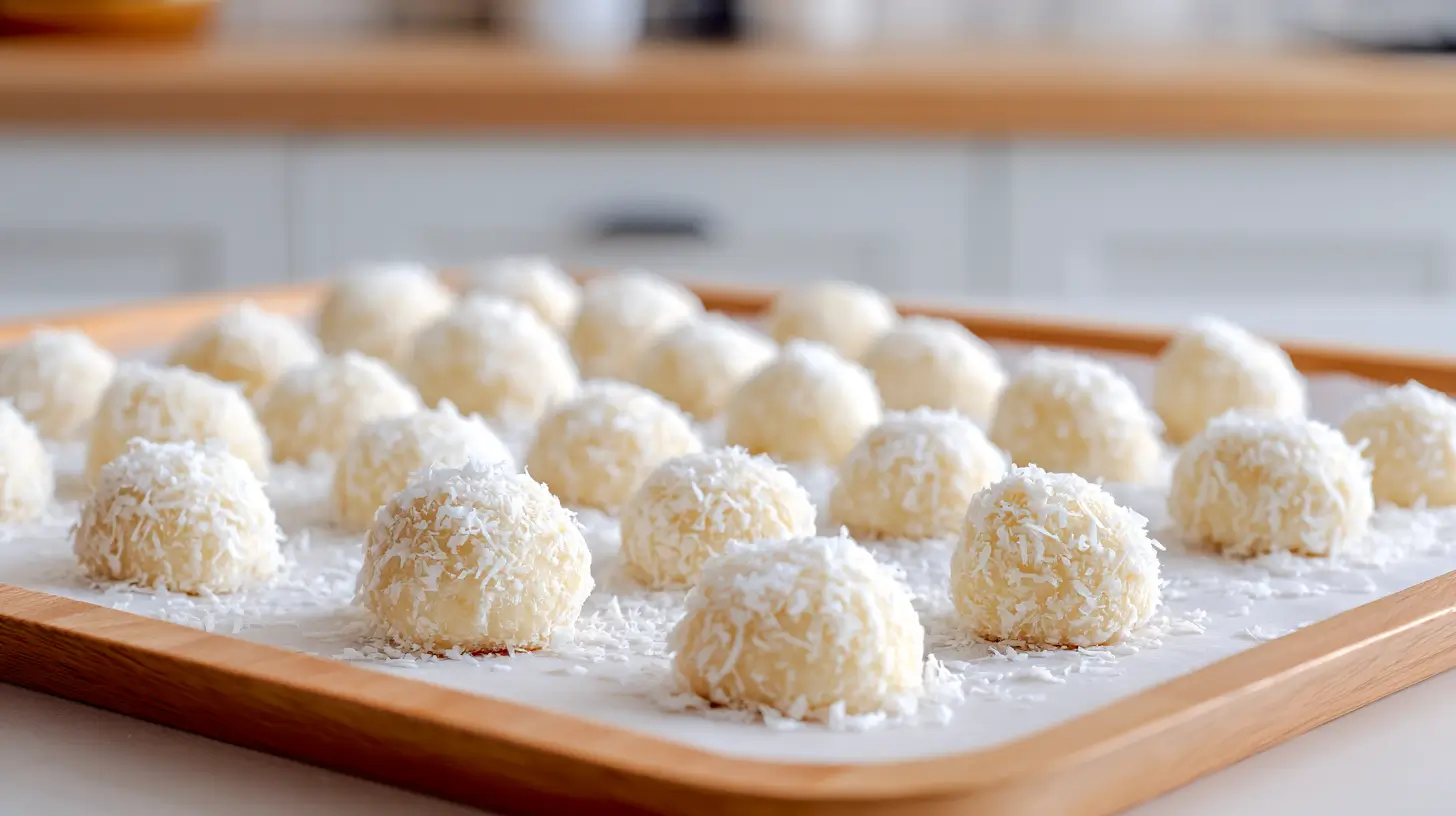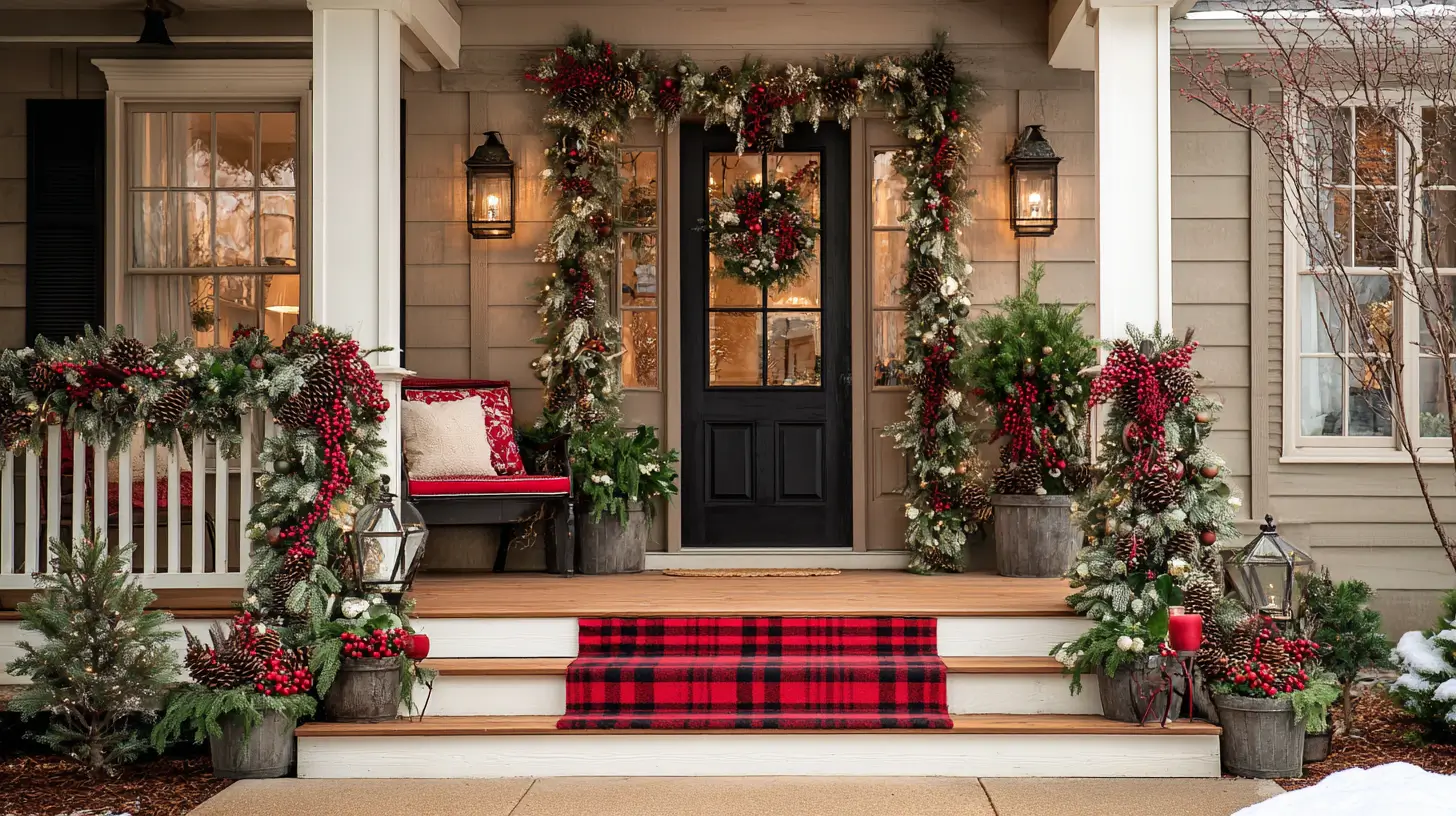Starting an herb garden might sound like something only expert gardeners do, but trust me—it’s easier than it looks. And the best part? It’s useful, fun, and makes your food taste better without much effort. You don’t need a huge backyard or fancy gardening skills. A few small pots, a little sunlight, and some patience are all it takes to get fresh herbs growing right in your home.
If you’ve ever bought a tiny bunch of basil at the store, only to have it wilt in your fridge within days, you already know one of the biggest benefits of growing your own herbs. You get fresh ingredients whenever you need them, and they last much longer when they’re still growing. Plus, there’s something incredibly satisfying about snipping fresh rosemary or mint straight from your own plant. It’s like having a tiny farm, but without the early morning chores.
In this post, I’m going to walk you through some of the best ways to grow herbs, whether you have a big garden, a small balcony, or just a windowsill. We’ll talk about easy ideas for setting up your herbs, which ones grow best together, and even how to use them for more than just cooking. By the end, you’ll have all the details you need to start your own little herb oasis. No worries if you think you can’t garden! I’ve got some easy tips for beginners, too.
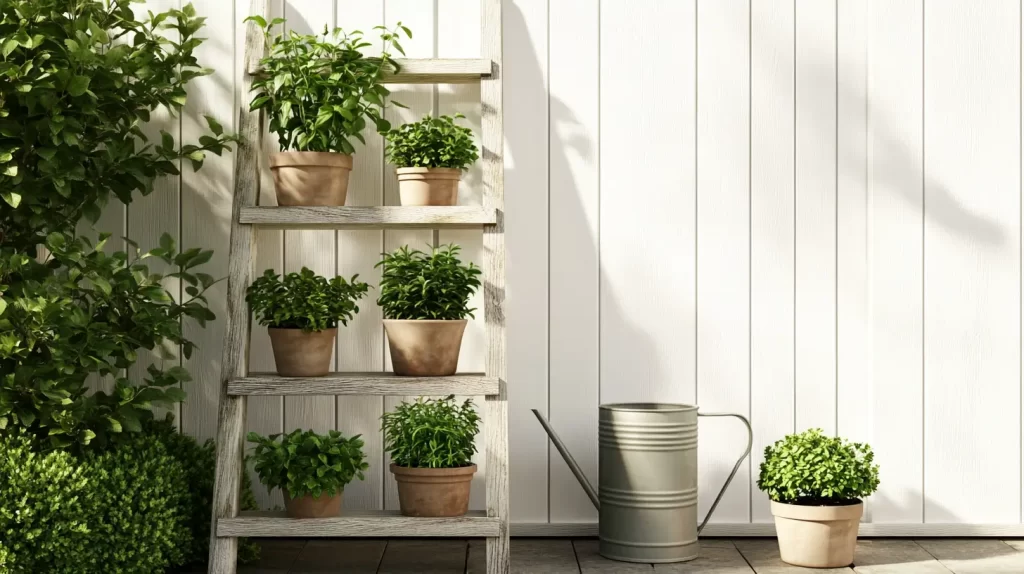
This site includes affiliate links; you can check the disclosure for more details.
Budget-Friendly Ways to Start an Herb Garden
Starting an herb garden doesn’t have to cost a fortune. Sure, you could buy fancy planters and organic potting soil, but the truth is, herbs aren’t picky. You can grow them on a budget without skimping on quality.
Here’s how to save money when starting your herb garden:
- Use kitchen scraps – Did you know you can grow some herbs from leftovers? Green onion roots, basil stems, and even mint cuttings can regrow in water. Just snip and place them in a glass until they sprout roots, then plant them.
- Buy seeds instead of plants – A packet of seeds costs about the same as one small plant but gives you way more herbs. It takes a little patience, but it’s worth it.
- Repurpose containers – No need for fancy pots! Use old coffee cans, yogurt containers, or even egg cartons to start your herbs. Just poke a few holes for drainage.
- Make your own soil mix – Potting soil can be expensive, but you can stretch it by mixing it with compost, shredded newspaper, or even dirt from your yard (just bake it in the oven at 200°F for 20 minutes to kill any bugs).
- Look for free plant swaps – Many gardeners love sharing extra herbs. Check local Facebook groups or community swap events. You might score free plants!
Investing in an herb garden doesn’t have to be expensive. Fresh herbs, tiny price tag—now that’s a win-win.
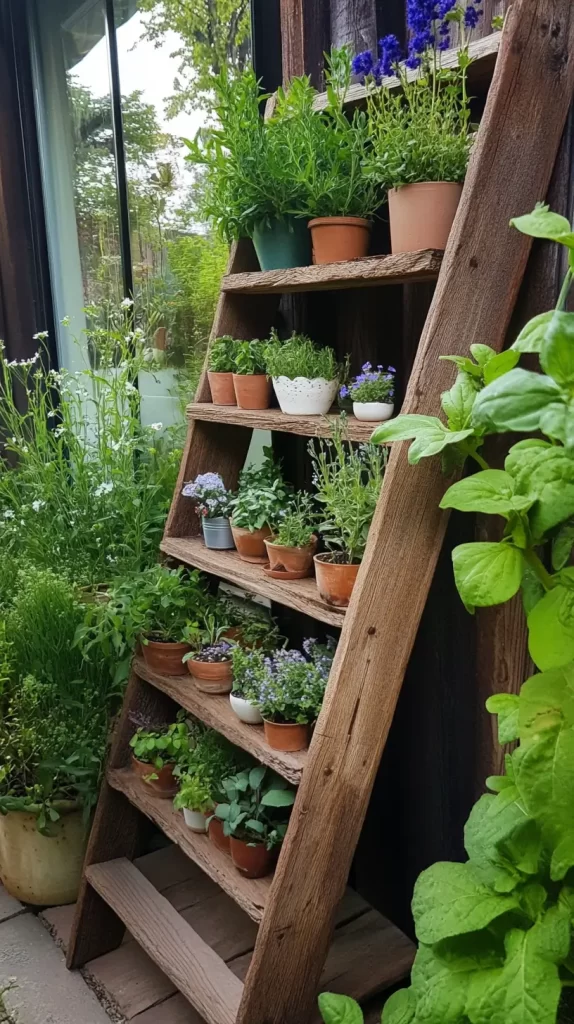
Ladder Ideas for a Small Herb Garden
If you’re short on space, a ladder-style garden is a clever way to grow herbs without taking over your entire patio. Think of it as vertical gardening, but in a way that looks cute and stylish instead of just practical. A simple wooden ladder, an old bookshelf, or even tiered plant stands can work perfectly.
Some easy ladder garden ideas:
- Leaning ladder with pots: Take an old wooden ladder and place small herb pots on each step. Lean it against a wall or fence for a rustic touch.
- Hanging baskets on a step ladder: Use sturdy S-hooks to hang small baskets filled with herbs from the ladder rungs. Great for draping herbs like oregano or thyme.
- Repurposed bookshelves: If you have an old bookshelf, turn it into a plant stand by filling each shelf with herb pots. It keeps plants off the ground and within easy reach.
- Wall-mounted ladder shelves: Mount an old ladder horizontally on a wall and use it as a shelf for herb planters. Saves space and adds charm to any area.
With a ladder setup, you get all the benefits of a full herb garden without needing a big yard. Plus, it makes watering and harvesting a breeze since everything is stacked neatly.
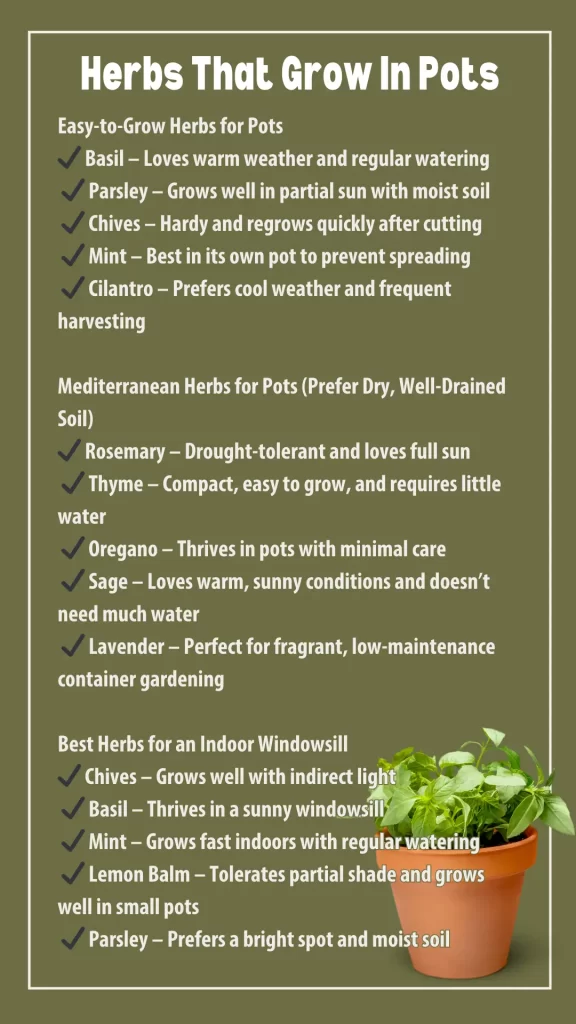
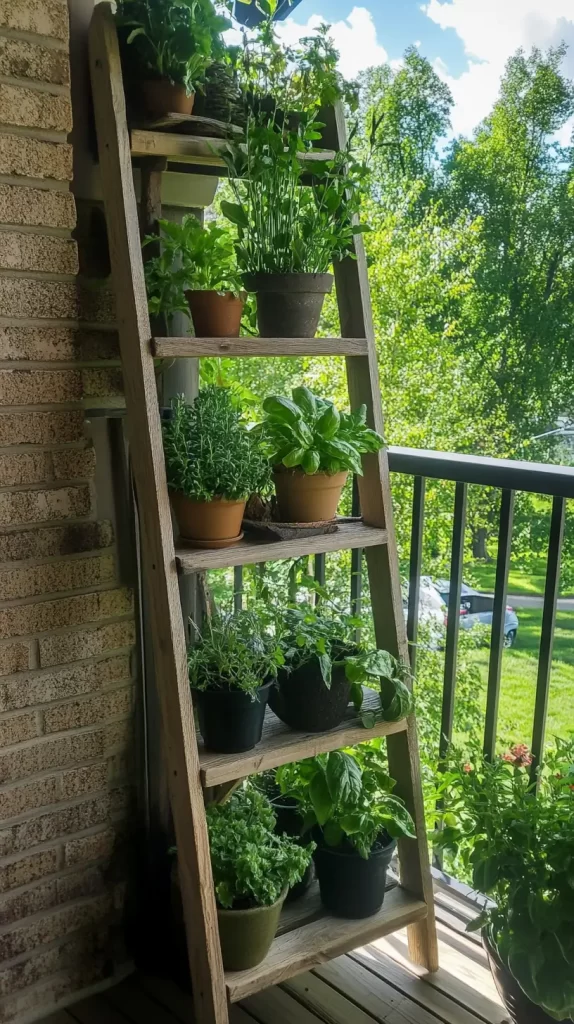
How an Herb Garden Saves You Money on Groceries
If you’ve ever bought fresh herbs at the store, you know they aren’t cheap. A tiny bunch of basil can cost $3 or more, and half the time, it goes bad before you use it all. Growing your own herbs is a simple way to cut grocery costs while still adding fresh flavors to your meals.
How an herb garden helps your budget:
- Fresh herbs whenever you need them – No more last-minute store runs or overpriced herbs in tiny plastic boxes.
- No waste – Instead of throwing away half-used herbs, you pick only what you need.
- Cuts down on takeout – Cooking at home is more fun (and cheaper) when you have fresh ingredients at your fingertips. A sprinkle of basil or cilantro can take a simple meal up a notch.
- Dried herbs for free – Store-bought dried herbs can be expensive, but you can air-dry your own by tying small bunches upside down in a dry spot. Once they’re crispy, crumble them into jars and store for months.
- Grows back year after year – Many herbs, like rosemary, oregano, and thyme, are perennials, meaning they keep growing season after season without needing to be replanted. That’s free herbs for years!
Having an herb garden is like having a tiny grocery store right at home. You’ll spend less and enjoy fresher, better-tasting food—without throwing money away on herbs that don’t last.
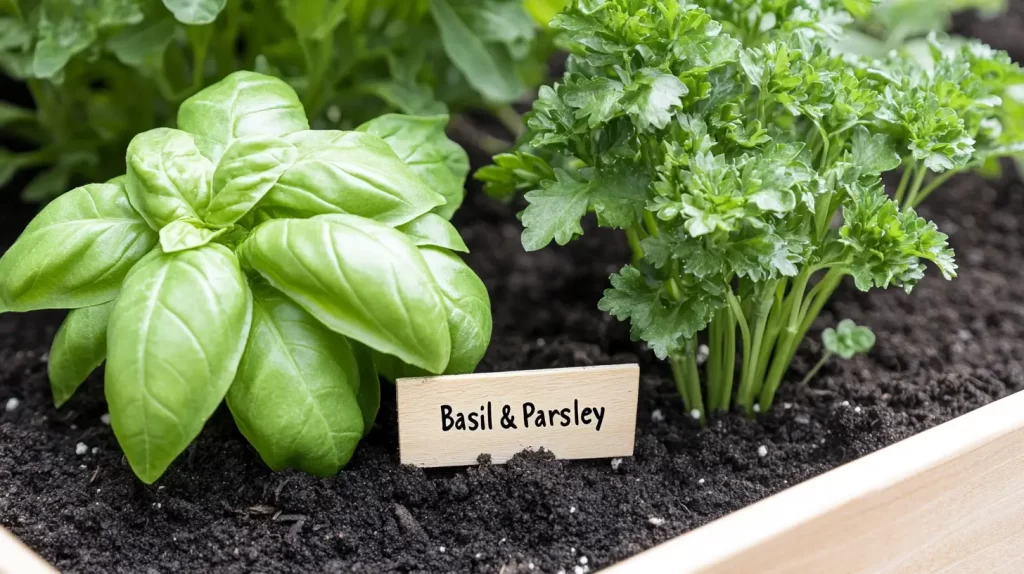
Which Herbs Grow Well Together?
Not all herbs play nice together, so if you’re planting multiple ones in the same pot, it’s good to know which ones get along. Some herbs love sharing space, while others need their own personal bubble to thrive.
Good herb pairings:
- Basil and parsley – Both love rich, moist soil and do well together.
- Rosemary and thyme – These two prefer drier conditions and grow well side by side.
- Cilantro and chives – Perfect for a bright, sunny spot, and they don’t compete for nutrients.
- Mint (by itself!) – Mint is a bit of a troublemaker and will take over any container. It’s best in its own pot to prevent it from crowding out other plants.
Pairing herbs that need similar watering and sunlight levels will keep them happy and growing strong. If you’re unsure, keep it simple by using separate pots for each herb.
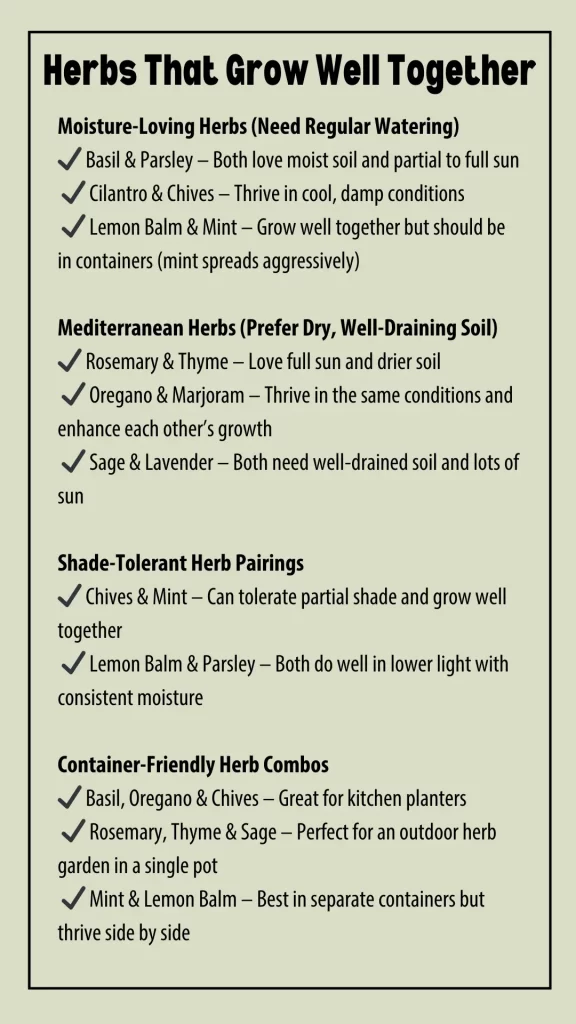
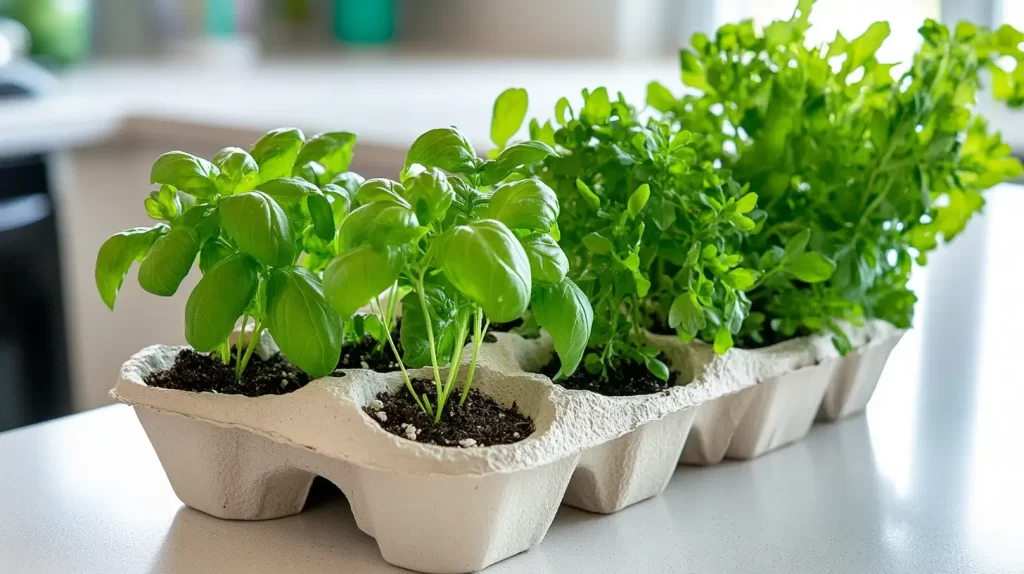
DIY Herb Garden Hacks to Save Even More Money
Just a bit of creativity can really help when you are putting together a budget-friendly herb garden! You don’t need to spend much at all—just use what you already have.
Here are some DIY tricks to make your herb garden even cheaper:
- Eggshell planters – Crack eggs carefully and save the bottom halves. Fill with soil, plant seeds, and once they sprout, you can plant the whole shell in the ground—it breaks down and feeds your plants.
- Plastic bottle greenhouses – Cut the bottom off a clear plastic bottle and place it over a seedling to create a mini greenhouse. This helps herbs grow faster, especially in cooler months.
- Cardboard seed starters – Toilet paper rolls make great biodegradable seed starters. Just stand them up in a tray, fill with soil, and plant your seeds. When they’re ready, plant the whole roll—it breaks down naturally.
- DIY self-watering system – Poke small holes in a water bottle, bury it next to your herbs, and fill with water. This slowly waters your plants over time, so you don’t have to do it as often.
- Free mulch from your yard – Grass clippings, leaves, or even shredded newspaper can be used as mulch around herbs to keep moisture in and weeds out.
These hacks make an herb garden even more affordable. A little effort now means fresh, homegrown herbs without spending extra money. And honestly, it’s kind of fun finding new ways to make gardening work on a budget!
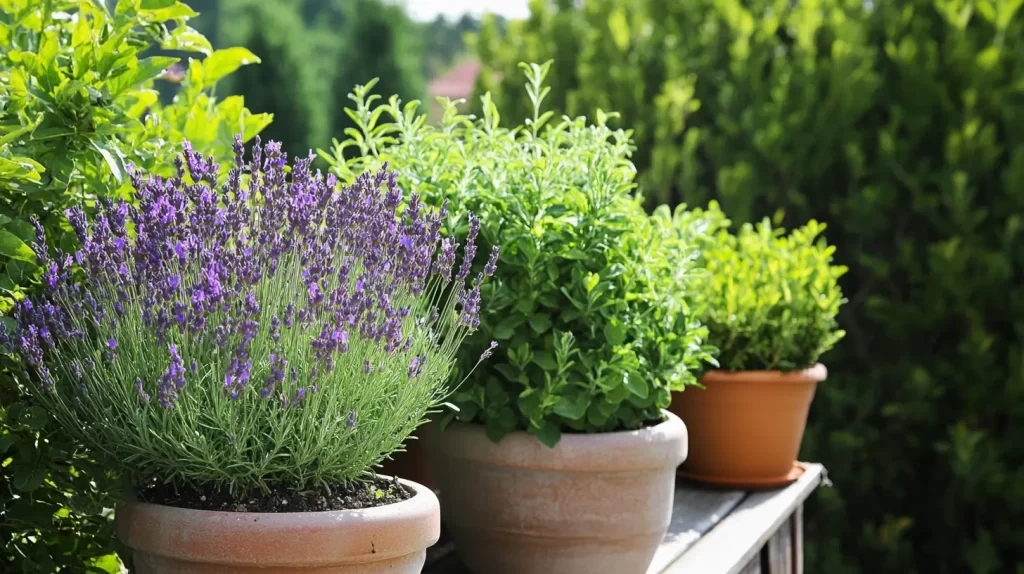
Growing an Herb Garden for Medicinal Uses
Herbs aren’t just for spicing up dinner. Many of them have been used for centuries as natural remedies. While they aren’t a replacement for medicine, they can be a great way to support wellness in a simple, natural way.
Here are some herbs that have been used for their health benefits:
- Chamomile – Known for calming nerves and helping with sleep.
- Peppermint – Great for soothing upset stomachs and aiding digestion.
- Lavender – Helps with relaxation and can be used in homemade bath products.
- Echinacea – Commonly used to support the immune system.
- Lemon balm – Often used to ease stress and improve focus.
Growing these at home means you can always have fresh leaves to make tea, add to homemade skincare, or use in cooking. And they smell amazing, too!
The Best Herbs for Beginners
If you’re just starting out, some herbs are much easier to grow than others. You want ones that don’t require a ton of care and won’t punish you if you forget to water them for a day or two.
Top easy-to-grow herbs:
- Basil – Grows quickly and loves warm weather. Just pinch the tops to keep it from getting too tall.
- Chives – Super low-maintenance and will keep coming back year after year.
- Mint – Almost impossible to kill (but keep it in its own pot!).
- Thyme – Hardy and doesn’t need much water.
- Rosemary – Loves dry soil and thrives with little attention.
These herbs are perfect for beginners because they don’t require much effort. Even if you forget about them for a bit, they’ll still keep growing.
How to Grow an Indoor Herb Garden
Not everyone has a backyard or patio, but that doesn’t mean you can’t grow herbs. Many herbs do just fine indoors as long as they get enough light. A sunny windowsill is usually enough to keep them happy.
Tips for an indoor herb garden:
- Pick the sunniest spot – South-facing windows get the most light, which is perfect for herbs.
- Use well-draining pots – Herbs don’t like soggy roots, so make sure your pots have drainage holes.
- Water regularly (but not too much!) – Most herbs need watering when the soil feels dry to the touch.
- Rotate the pots – If herbs start leaning toward the light, turn them every few days so they grow evenly.
Good herbs for indoors: Basil, parsley, chives, thyme, and mint. They all do well in containers and don’t need a ton of space.
Final Thoughts
An herb garden is one of the easiest ways to bring fresh flavors into your home, whether you grow them in a backyard, on a balcony, or right in your kitchen. With a little planning, you can set up a small herb garden that gives you fresh ingredients year-round.
If you’re short on space, ladder gardens are a great way to grow vertically. Pairing herbs that like similar conditions makes them thrive, and if you’re interested in more than just cooking, plenty of herbs have been used for medicinal purposes. Beginners can start with low-maintenance herbs like basil, chives, and mint. And if outdoor space is an issue, indoor herb gardens are just as easy to maintain.
Whether you’re growing them for fresh cooking, home remedies, or just because they smell amazing, herbs are a great addition to any home. Plus, if you love finding ideas like this, Pinterest is full of creative ways to display and use fresh herbs. Now that you know how easy it is, there’s no reason not to start your own herb garden today!

